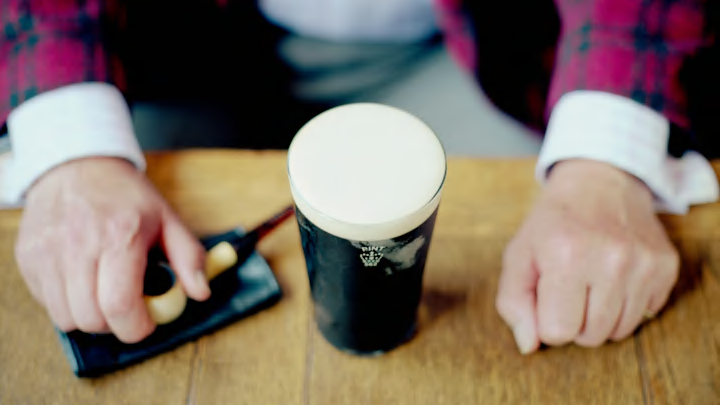There’s something soothing about watching the tiny, golden bubbles rush to the top of the glass after pouring a cold beer. Unless, of course, your brew of choice is Guinness or some other stout, in which case the bubbles do the reverse, making their way to the bottom of your pint glass. This phenomenon has long been puzzling beer drinkers. It’s easy to see why bubbles would float to the top of a lager or ale—the air is lighter than the surrounding liquid, after all. So how come stout, a beer that’s definitely heavier than the bubbles it contains, produces this backwards effect?
The answer can be traced to the shape of the glass. In 2012, Irish mathematicians published a study outlining the effects the iconic Guinness vessel has on the trajectory of beer bubbles post-pour. What they found is that stout bubbles behave differently depending on where they are in the glass: Bubbles in the middle rise up to the surface with nothing to block their path, while bubbles along the sloping walls experience drag and clump together. When the bubbles reach the top and crowd at the head, some liquid gets pushed to the sides, which in turn pushes down the bubbles sticking to the wall. This creates a current of beer pulling down the bubbles, then circulating back upwards again once it hits the bottom.
This same occurrence can be witnessed with lighter beers, but it’s much more exaggerated in stouts. In addition to carbon dioxide, most stouts contain nitrogen, a gas that takes longer to dissolve in liquid. Nitrogen bubbles are also smaller, making them more susceptible to drag.
There’s an easy way to prove to your friends at the bar that the Guinness effect is more than just an optical illusion. Instead of ordering your stout in the traditional receptacle have it served to you in a tall, cylindrical glass. If the beer is poured into the glass while it’s tilted at an angle, you should be able to see the bubbles rise to the surface in the upper part of the glass and sink beneath the surface in the lower part. In this experiment the bottom of the glass mimics a pint glass while the higher portion acts as an anti-pint (or upside down pint) glass, which has the opposite impact on the bubbles’ movement.
Have you got a Big Question you'd like us to answer? If so, let us know by emailing us at bigquestions@mentalfloss.com.
